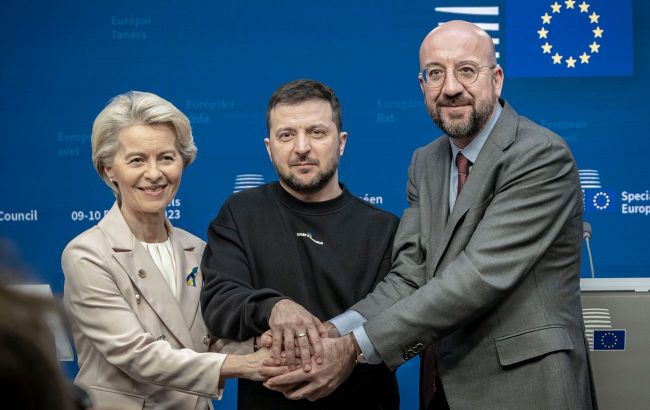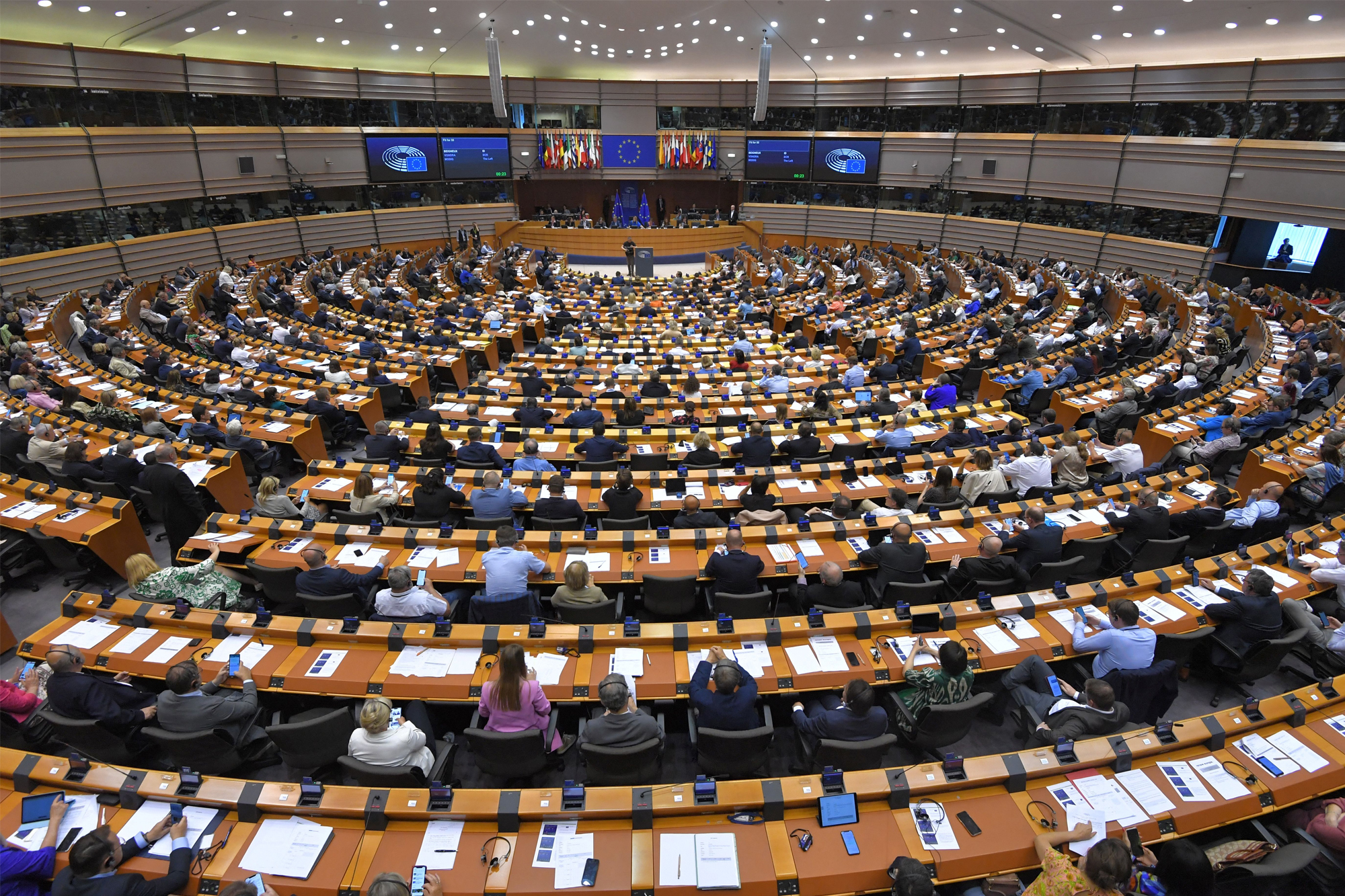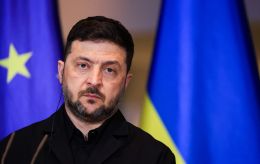EU pledges €50 billion to Ukraine. Funds allocated with stringent oversight for reforms
 President of the European Commission Ursula von der Leyen, President of Ukraine Volodymyr Zelenskyy, President of the European Council Charles Michel (photo: Getty Images)
President of the European Commission Ursula von der Leyen, President of Ukraine Volodymyr Zelenskyy, President of the European Council Charles Michel (photo: Getty Images)
As early as March, Ukraine will start receiving financial support for the state budget from the EU under the Ukraine Facility program. Over the next six months, the total amount of funding will be €6.3 billion. How the money will be allocated, who will control its use, and whether the resources will be enough for the whole year - read in RBC-Ukraine article.
Sources used: EU documents, public and exclusive comments of officials and experts.
Contents:
- Ukraine will have more money from March
- Strict conditions: no reforms, no money
- Mechanism to control money use
- Does Ukraine's budget have enough money?
In the first two months of this year, Ukraine received $1.2 billion from international partners to cover the state budget deficit. This is a fifth of the required amount, which, according to the Ministry of Finance, amounts to $3 billion per month.
In January-February, the general fund of the state budget received $0.9 billion from Japan, $295 million from Norway, and $3 million from Spain. These are mostly grants under the World Bank's PEACE in Ukraine project. International assistance was used to finance priority social expenditures, including salaries for teachers and doctors, employees of the State Emergency Service, pension payments, humanitarian needs, and social protection.
Ukraine raised another UAH 1.95 billion through the placement of domestic government bonds.
Ukraine will have more money from March
In March, the amount of external financing of the state budget will increase significantly. The IMF will provide about $900 million - the program was successfully reviewed in February and a decision on the next tranche is expected in the second half of March. Funding from Japan and the UK will continue.
And the main amount - 4.5 billion euros - is to come from the European Union. This is transitional financing before the launch of the 4-year, EUR 50 billion Ukraine Facility (UF) program. To receive the March tranche, a memorandum on such financing and a loan agreement will be signed soon. As for the UF program, all 27 EU members approved it on February 1. The program regulations were approved in late February.
The document defines the directions and forms of using the money. The reforms themselves will be contained directly in the Ukraine Plan, which is expected to be approved in April. The draft of this document is currently being finalized, and it will contain conditions and indicators that will allow Ukraine to receive financial support every quarter.
Out of the total amount of EUR 50 billion, EUR 38.2 billion is earmarked directly for the budget, EUR 7 billion for concessional loans for economic development, and EUR 4.8 billion for technical support and funds to cover interest on concessional loans. The amount of loans will be 33 billion euros, and the amount of non-repayable aid will be 17 billion, according to the European Council documents.
 European Council meeting (photo: Getty Images)
European Council meeting (photo: Getty Images)
The annual amount of funds to be allocated until 2027 inclusive will decrease. In 2024, 16 billion euros will be allocated. Initially, there was no certainty about this amount. Ukraine wanted to receive €18 billion, but the EU offered only €9 billion. In the end, the parties reached a compromise in favor of Ukraine.
Strict conditions: no reforms, no money
The reform program will be a very large document. RBC-Ukraine has reviewed its interim version. It is expected that the program will include about 140 conditions-indicators, each of which will have its own "price". The main areas of reform in the program will be public administration, public finance, the justice system, and the fight against corruption. Economic reforms will need to be carried out, in particular: in the energy sector, transport, agriculture, IT, and digitalization.
If the indicator is not met on time, the tranche will be reduced by a corresponding amount. For example, if Ukraine needs to fulfill 3 indicators by a certain deadline to receive the next tranche of 600 million euros, and the deadline is missed, say, for one of them, the amount of money will be reduced proportionally - by one-third, to 400 million. To get the rest. 200 million, the overdue indicator will have to be fulfilled within a year at the most, otherwise the money will simply "burn."
Back at the beginning of UF's preparation in 2023, the RBC-Ukraine's sources said that the stricter financing conditions were caused by the fact that Ukraine often delayed the implementation of indicators in cooperation with the IMF. However, Ukraine is now fulfilling all the conditions for the IMF program on time, and this is confirmed by the last two EFF reviews.
All the reforms envisaged in the Plan will be closely linked to the prospect of Ukraine's accession to the EU, as the European Commission has emphasized in its comments.
If everything goes according to plan, after the program is approved, Ukraine will be able to receive another €1.8 billion by the summer.
"This is expected to happen in April or May. And then there will be the first assessment of reform indicators. This will happen every quarter. The second quarter will end in July-August, and in July and August we will evaluate and receive money for the implementation of reforms," says First Deputy Minister of Economy of Ukraine Oleksii Sobolev.
Thus, following the results of the two quarters, Ukraine's budget will receive 6.3 billion euros from the EU. Sobolev noted that the money will be used to cover the state budget deficit. Given that the annual funding from the EU is 16 billion euros, 9.7 billion euros will remain for the second half of the year, which will be provided in two tranches depending on the fulfillment of the program indicators.
.jpg) Ukrainian Prime Minister Denys Shmyhal and Minister of Finance Serhii Marchenko (photo: Vitalii Nosach/RBC-Ukraine)
Ukrainian Prime Minister Denys Shmyhal and Minister of Finance Serhii Marchenko (photo: Vitalii Nosach/RBC-Ukraine)
However, the increase in EU funding will still not cover the necessary expenses, especially for the military, says Vitalii Vavryshchuk, head of the macroeconomic research department at ICU Group. "6.3 billion euros is less than the government expects for this period (until the summer - ed.). The key issue is funding from the United States. If it comes, the planned amounts from the EU will be sufficient to comfortably finance the budget deficit. But without funds from the United States, this amount is far from desirable," he says in a commentary to the agency.
Mechanism to control money use
The instrument to control the use of EU funds will be quite serious. It is planned to introduce a three-stage form. First, the Audit Service of Ukraine will control expenditures. The government will be obliged to publish data on individuals and legal entities that receive more than 100 thousand euros for reforms and investments.
Secondly, an independent Audit Council will be organized, which will be able to conduct inspections at any time during the program and will notify the EC of possible misuse of funds. Thirdly, the European Commission will monitor the spending of funds every quarter. It will provide the European Parliament and the Council with an annual assessment of the use of funds provided to Ukraine.
Mr. Vavryshchuk believes that the enhanced control over the program is since it is not just a program to support the economy during the war, but also a tool to stimulate Ukraine's approximation to EU standards.
"The European Commission bears a great political responsibility for Ukraine's full compliance with the loan conditions. There is a desire to make sure that none of the opponents of the program can blame it for not achieving its goals. Hence the desire and the need to establish strict control over the fulfillment of the conditions," he says.
Does Ukraine's budget have enough money?
Ukraine's need for international assistance in 2024 is estimated at $36-39 billion, or at least $3 billion per month. So far, at the beginning of March, external financing of the state budget amounted to $0.6 billion per month. But after receiving money from the EU, the IMF, and Japan ($1.4 billion), the monthly figure will be about $2.8 billion, which is quite good, says Oleksandr Parashchii, head of the analytical department at Concorde Capital.
"So there should be enough money until the summer. In addition, the government is preparing options to increase budget revenues, in particular by increasing the military tax. State-owned companies are paying dividends on an accelerated basis.
"Another question is what will happen in the middle and second half of the year when all the extra taxes and dividends are exhausted," Parashchii says. But so far, he believes, there is a potential to raise $31-33 billion in international aid by the end of the year. The missing amount is not so critical, the expert believes, and given the government's optimistic expectations, it may well be covered by the United States and other partners.
In addition, there is a high probability that Ukraine will receive interest on Russian assets in the EU. To date, they have accumulated more than $4 billion.

